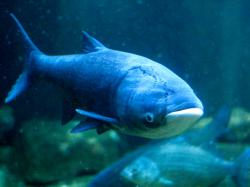Louisiana Chef's Solution To Asian Carp Invasion: Eat Them
April 15, 2013 | 1 min to read

Louisiana Chef Philippe Parola has had his eye on the Asian carp situation in Louisiana for several years, and he is not shy about expressing his worry and frustration over the slow bureaucracy of addressing what he sees as a serious threat to the ecosystem and the state’s multi-million dollar recreational and commercial fishing industry.
“People in Louisiana need to be aware of the problem, especially our policymakers,” says Parola, citing waterways in Arkansas, Kentucky, Tennessee and Illinois where bighead and silver carp have overtaken manmade lakes and sections of rivers. “We do not want to be in the same boat as these other states. If we are not proactive in handling the Asian carp issue, in 10 years, it will be too late. This will be a much bigger and more expensive problem to deal with.”
70′s Fish Ponds Cleaners
Filter feeding bighead and silver carp were introduced to fish farm ponds in the central Midwest in the 1970s to clean murky pond water. Flooding along the Missouri and Mississippi Rivers caused ponds to overflow, allowing these Asian carp to escape into rivers and reproduce in the wild. Depending on the size and age, a mature female can release anywhere from 100,000 to 3 million eggs each spawning, says research fish biologist Duane Chapman, leader of Asian Carp Research with the U.S. Geological Survey (USGS) in Columbia, MO. Asian carp can consume more than 20 percent of their body weight per day in algae and plankton, and can weigh up to 100 pounds.
To read the rest of the story, please go to: Louisiana Seafood News
